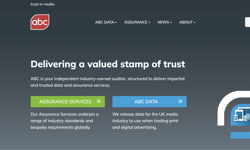Many search engine marketers have decried the fact that organic search has gotten increasingly harder every year, and it has. In 2015, Google upped the ante for search marketers by making changes to its algorithms and adding features that make it harder to obtain search rankings and to control how search result listings are displayed. This makes it more difficult for the marketer to craft their message and ensure that it reaches the audience as intended. Google’s stated intent for these ongoing changes is to improve the user’s experience with search. Placing the user in the centre of search may be good for Google, but it remains to be seen if it is good for those of us who use search to reach new readers and connect with our existing audiences. Creating a win-win for all parties is the challenge for the marketer. Google has also responded to the growth of mobile devices and their use as the users’ power tool by providing a ready source of information anytime and anywhere. It can be stated in a nutshell that search this year has moved to put more and better information in a smaller footprint and make it more readily available.
Desktop Search Still Viable in a Mobile World
In all the hype on mobile, let’s not forget the venerable desktop and its role. As long as people work at desks and read on computers, desktop search will endure. For those focused on business audiences, it is still necessary to focus on desktop search. Desktop search requires the searcher to be seated at a computer and actively engaged in a specific information gathering quest. Since the user is focused on getting information, this is the ideal situation for publishers who can provide in-depth information. Therefore, it is important to focus on how to improve search performance on the desktop as well as on mobile devices. My previous articles have noted how Google has decreased the amount of page real estate available on desktop search for display of optimised listings. The Knowledge Graph provides useful information to address user questions in a timely manner, but by letting the user skim for basic information on a topic, it has reduced the need for the user to dig into the search results. The inclusion of more images, which draw the eye away from the textual search results and the seemingly ever-increasing ad burden on search results pages have made desktop search pages rather cluttered. Google has tried to reduce the clutter by making changes to how the results are displayed – shortening the titles and providing more links and information in a single line. Shortened page titles require that the marketer waste no words in trying to craft titles that provide more than just the barest facts. This reduction has made it harder for search marketers to stand out from the pack and control the message they want to convey.
Google Battles Weak and Poor Quality Content
In Google’s ongoing effort to provide users with high quality content, the search giant must wage a continuous battle with poor quality content, over-optimised sites and those using deceptive linking practices and so-called black hat SEO. Two major Google algorithm updates have the “cute” code names Panda and Penguin. These are anything but adorable black and white animals. The first Panda update occurred in 2011, and additional updates have occurred on a somewhat regular basis since that time. The intention of the Panda updates has been to demote (penalise) sites that have “thin” or poor quality content. The Panda updates hammered publisher and e-commerce sites. The publishers suffering the most traffic loss were those with thousands of pages of marginally informative articles. Demand Media’s eHow site was hit hard. E-commerce sites with limited content on product pages were also impacted.
Recovery of the lost search traffic for any site hit with a Panda penalty, while possible, requires hard work. The duplicate and / or weak content must be identified, rooted out and replaced. Since Panda updates are now a regular occurrence, site owners need to put into their workflow regular check-ups to make sure that their sites are not harbouring duplicate and thin content that will trigger a Panda penalty on the next update. Additional Panda variations have continued to roll out into 2015. On April 29, 2015, Google-watchers and site owners detected a “big” change creating huge drops in traffic for sites impacted. Because this change snuck in without warning, it has been dubbed Phantom 2. The change seems to attack the same problems at the page level addressed by Panda – thin content.
In 2012, Google hatched its first Penguin update. The Penguin update was designed to target over-optimisation and other violations of Google’s rules of the road. Just as with Panda, there have been additional Penguin updates launched on a regular basis. Search marketers have been alerted by Google to expect another Penguin update during summer 2015. This suggests that for search success in 2015, site owners need to constantly review their sites for content and optimisation that might trigger Panda and Penguin penalties. This means constantly reviewing Google’s guidelines as to what type of content it deems fit or unfit and then massaging site content to conform to Google’s rules. Note in this authors opinion, the rules are always subject to change. Just as in school yard games, the owner of the only ball can make the rules. Google’s huge market share makes it able to bully site owners into conformity.
In 2015, Google once more launched an attack on ‘doorway pages’. Designed to increase a site’s search footprint for specific keywords, doorway pages are an old and discredited search marketing tactic. Google in their guidelines for web development has routinely advised marketers to avoid using doorway page campaigns because they yield a poor user experience. Although Google’s has advised site owners for a number of years to avoid doorway pages and has had the technology to detect them, the decision to go after them in 2015 in my opinion is based on the fact that doorway pages have recently proliferated in morphed forms. In their early format, doorway pages were often machine generated with keywords plugged into very generic content. As search marketing has evolved, so too have doorway pages, and the new morphed forms provide almost as bad a user experience as the original machine-generated pages. Google’s decision is also consistent with their attack on ‘thin content’ sites. Doorway pages were the original thin content pages.
With the shift from desktop to mobile, users want crisper, more keenly targeted search results and do not want to be directed to a low-quality doorway page or to so-called bridge pages that force the user to make yet another click. Hence, it is particularly annoying to mobile searchers to be guided by Google’s results to doorway pages that provide little more information than is found on Google’s search results page. Doorway pages often create a carousel effect where the user performs a search and is continuously lead to the same page in spite of changing the query. These pages maximise the site owner’s search footprint as well as the user’s frustration. In 2015, Google has finally made a move to rid these pages from the search results. Although all types of sites have used doorway pages in the past, in recent years they have been heavily used by localised businesses. An example use in the publishing industry would be for a newspaper chain to promote its availability town-by-town with each localised page returning to a listing of the towns covered. Doorway pages are traffic funnels that are often effective, even while irritating the users. By clamping down on doorway pages, Google has improved the user experience for desktop as well as mobile users.
Mobile Friendly Sites Get a Lift
Google announced that on April 21 it would begin giving mobile-friendly sites a boost. In an unusual move, Google provided advance warning, testing tools and guidelines so that site owners could prepare their sites. Some were anticipating Mobilegeddon - huge ranking drops and dramatic traffic drops as Google implemented its new mobile friendly algorithmic change. As this is being written, the results are still not completely tabulated. It appears that a large number of high traffic, search dependent sites had already made the changes necessary and were not impacted. On the other hand, companies that do not already have mobile-friendly sites can expect penalties. The impact will be ameliorated or amplified based on the percentage of search traffic that comes from mobile devices.
What Awaits Publishers Using Search?
With limited search real estate available on smaller screens and search rankings increasingly difficult to secure, each organic search click becomes more important. They must not be wasted. It is imperative that a site catch the surfer on their first search and direct their attention directly to the desired content with minimal effort; otherwise that searcher may very well move on to another site. With Google implementing ever more sophisticated measurements of quality using bounce rate metrics; it behoves site owners, who want to maintain first page rankings, to keep the searcher on their site. Publishers and other site owners need to question whether they are in fact making it as easy as possible for all your visitors to find just what they want almost instantly. That should be the goal, just as Google’s goal is to deliver quality content fast and accurately to the user.
Look beyond search and determine if you effectively supporting the customer’s quest through your navigation, and does Google understand how your navigation supports the user? Ask yourself whether your faceting supports a second more refined search query. Your navigation and its faceting should support searcher behaviour. Does your site make it easy for the first time visitor to quickly find additional content when they arrive from a search engine? Your navigation should act as a secondary search tool. Google has recognised the value of the navigation, and through the site links allows site owners to communicate key navigational elements.
We can expect that in the future, Google will fit more useful information into less space in the search listing in an effort to satisfy the user more quickly. We cannot change the wind, so we must adjust our sails to ensure that our content is adaptable to the compressed search environment of the smaller screen.












